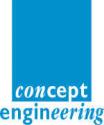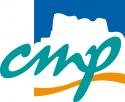M10 Test and diagnosis: Board-level functional fault diagnosis: industry needs and research solutions
Agenda
| Time | Label | Session |
|---|---|---|
| 14:30 | M10.1 | Motivation and Background Panelist: The introductive part of the tutorial will provide the motivation for board-level fault diagnosis and describe state-of-the-art in industry practice. It will also highlight the difficult problems being faced today that require new solutions. More in details, topics to be covered include:
|
| 15:30 | M10.2 | Data-driven diagnosis and guidance for repair Panelist: This part of the tutorial will first introduce the basic concepts of adaptive incremental functional diagnosis (AIFD) and it will discuss the main features that an automated AIFD approach should offer to the test/diagnosis engineer. Then, several machine learning techniques that can be exploited for AIFD will be introduced. More in details, the basic concepts related to the theory and application of the following machine learning techniques would be introduced:
The results of a comparative analysis of the previously presented machine learning techniques applied to AIFD would be shown. Moreover, the three best approaches, i.e., the data mining-, the Bayesian belief network- and the decision trees-based ones, would be presented in details. Finally, a new statistical AIFD approach would be discussed. Results of the application of all the presented approaches to both synthetic and real-world electronic boards would be shown
|
| 17:00 | M10.3 | How to handle data overload, evaluate diagnosis systems, and accomplish diagnosis at early stages of product manufacturing? Panelist: The accuracy of diagnosis and time needed for diagnosis also depend on the quality of syndromes (erroneous observations). Redundant or irrelevant syndromes not only lead to long diagnosis time, but also increase diagnosis complexity. This last part of the tutorial will review recent advances in enhancing diagnostic accuracy using various means, and include the following topics:
|











